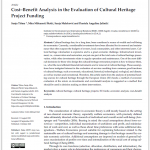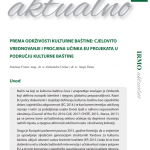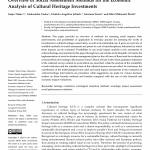
Journal: „Nova prisutnost – Časopis za intelektualna i duhovna pitanja“ („New Presence – Journal of Intellectual and Spiritual Issues“), Vol. XVIII, No. 3, pp. 653-668
Article: Importance of Storytelling: How to Create More Resilient Cultural Heritage
Publisher: Christian Academic Circle (CRAC)
Year: 2020
ISSN 1334-2312 (hard copy) and ISSN 1848-8676 (online)
DOI: https://doi.org/10.31192/np,https://doi.org/10.31192/np.18.3.15
Abstract
A well-told story has always been the cornerstone of good marketing and business, that is, »sales« and products and destinations. Faced with increasing competitiveness and increasingly demanding visitors seeking active nature tourism and integrated facilities, tourism stakeholders face the challenges of designing innovative tourism content that will, above all, »tell the story« and create a full, multisensory experience. Main ingredient of this holistic approach to destination development reflects primarily in the fact that the community is involved into all facets of development. The location turns into a destination once a location is harmonized with the needs of the tourists. Involving visitors in the life of the destination decreases the negative impact tourism might have and creates sustainability.
How does this process work in the case of natural disasters or pandemic crises? How can storytelling become an important vehicle for connecting people and creating a disaster resilient cultural heritage? What are the tools in disaster risk management especially when we talk about cultural heritage? The underlying question is also: how do/may social innovation/participatory governance contribute to a more resilient and inclusive, cultural heritage and how can such approaches be improved and applied across Europe?
This paper will explain the importance of storytelling in the context of pandemic crises as COVID-19 is, but also other natural disasters such as earthquakes or floods that are due to climate change and manmade influence more frequent than ever. Based on the results of research and examples of good practice (Croatian and European), this paper will identify basic steps and tools that can help both private and public stakeholders create quality product and content. By using examples of case studies it will also argue that innovative approaches and participatory governance could contribute to a more resilient and inclusive cultural heritage and ultimately desired tourist destinations.
Keywords
Cultural heritage, disaster risk management, integrated tourism, interpretation, resilience, storytelling
The full text is available at:https://hrcak.srce.hr/file/357998




